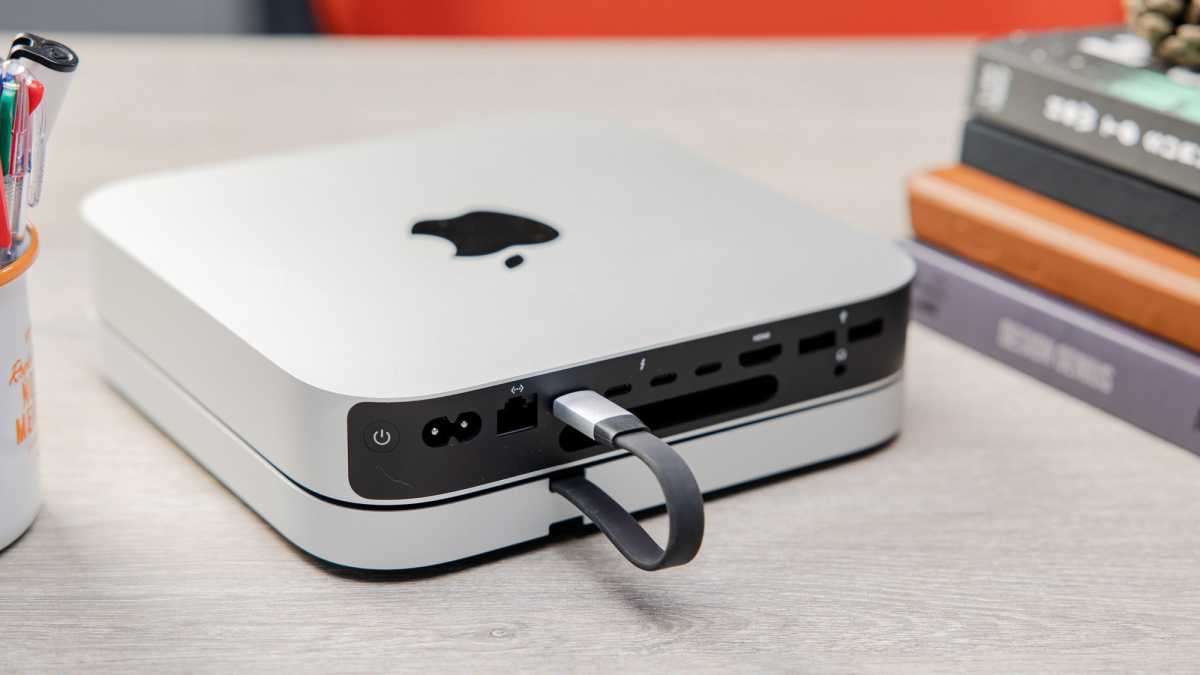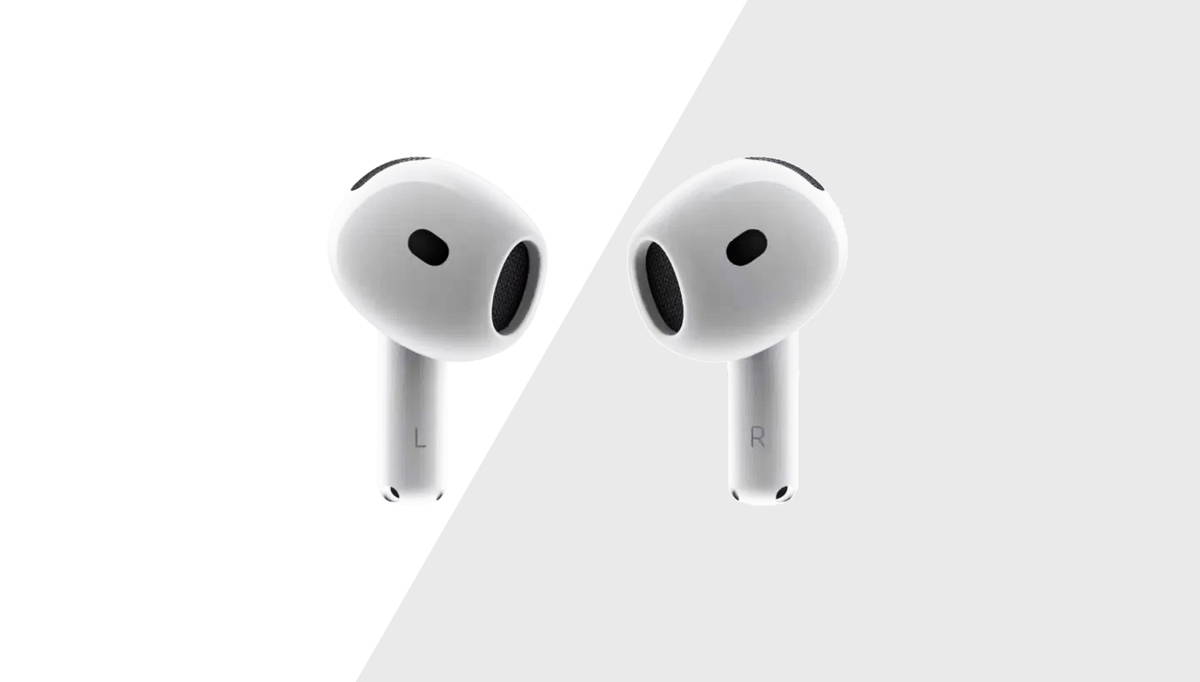Expert rating
Benefits
- Adds ports to the front of the Mac mini
- Adds an SSD enclosure for additional inexpensive storage
- New version supports NVMe M.2 SSD
The inconvenients
- USB 10Gbps, not Thunderbolt 40Gbps
Our Verdict
This affordable and stylish hub support for the Mac mini offers a range of useful front-facing ports missing on the Mac mini itself, as well as inexpensive internal storage – and the latest version supports both SATA M SSDs. 2 and the faster NVMe M. 2 SSDs.
Compatible with: Mac mini M2 and M2 Pro 2023; Mac mini M1 2020; Mac Studio
Size: 7.8 x 7.8 x 0.9 inches
Port :
- 1x USB-C (10 Gbps)
- 3x USB-A (10 Gbps)
- SD card reader (UHS-I, 104 MB/s)
- microSD card reader (UHS-I, 104 MB/s)
- 3.5mm audio jack
- Internal SSD enclosure
While Apple’s Mac mini is a powerful little computer with an array of ports on the back, its front is unnecessarily bare, lacking a single convenient port or slot. There is nothing other than a small light to show that it is on. Apple has certainly put the “mini” in “minimal” when it comes to the front-end appearance of its small desktop computer.
The Mac Studio has the same width and depth as the Mac mini but is larger. The Mac Studio also has two 10Gbps USB-C ports (Thunderbolt 4 on the M1 Ultra model) and a front-facing SD card reader. On the back, the Mac Studio and M2 Pro Mac mini ports are the same, while the entry-level M2 Mac mini has two fewer Thunderbolt 4 ports.
The Satechi Stand & Hub for Mac mini fixes the mini’s bare front by adding four USB ports, slots for SD and microSD card readers, and a 3.5mm audio jack port. The inclusion of card readers is important since the mini lacks this access point for inexpensive portable storage. The card readers are rated at UHS-I (104 Mbps) – 312 Mbps UHS-II would have offered faster transfers, but most users won’t notice the difference. A 512GB microSD card costs around $60/£50 online, a very cheap way to add storage.
Satechi has updated this rack/hub with faster connections and, most importantly, support for faster NVMe M.2 SSDs as well as SATA M.2 SSDs.
USB ports are now rated at 10Gbps for data transfer, up from 5Gbps but still not as fast as the Mac mini’s 40Gbps Thunderbolt 4 connections. Satechi’s rival Mac mini hub, the OWC miniStack STX, offers 40Gbps Thunderbolt 4, but costs 2.5 times the price for that privilege. 10 Gbps should be enough for most basic, non-professional data transfer needs.
Satechi says the Stand & Hub’s USB ports are data only and are not capable of charging, although in our testing we were able to charge an Apple Watch and an iPhone fairly quickly using the Stand & Hub’s USB ports .
The Stand & Hub also addresses another major limitation of the Mac mini: internal storage that is not upgradable by the user. If you want more than the base 512GB storage in the Mac mini, Apple charges you handsomely at the time of purchase (upgrading to 1TB costs $200/£200) and then doesn’t let you upgrade. upgrade the storage yourself.
Inside this mini accessory is a case in which you can install an internal SSD storage card. It’s cheaper than Apple’s build-to-order options: a 1TB internal SSD costs around $50/£50.

Foundry
The hub sits neatly under the Mac mini, giving the combined pair of devices the look of a slim Mac Studio but with more convenient front ports. It connects to the computer via a USB-C cable built into the back of the hub. The ports are USB rather than Thunderbolt and rated at 10 Gbps (gigabits per second) compared to Thunderbolt’s 40 Gbps.
While the original version did not support NVMe M.2 SSDs, the latest version allows you to choose your SSD standard. NVMe M.2 SSDs (with theoretical transfer speeds of up to 20 Gbps) are more performance-oriented than SATA M.2 SSDs (max 6 Gbps). However, this 6Gbps maximum limit means that the hub’s 10Gbps USB bandwidth is fine and there is no USB bottleneck. Many people don’t need blazing storage speeds and can keep any files requiring fast, low-latency performance on the Mac mini’s fast internal SSD and move more archive storage to the case’s SSD.

Foundry
NVMe SSD cards are more common than M.2 SATA SSDs these days. Installing the SSD inside the Stand & Hub is simple, and the appropriate size screwdriver and screw are included.
This support hub also fits Apple’s Mac Studio, so it’s also an inexpensive way to add fast storage to Apple’s latest pro-level desktop.
If you don’t need the extra storage space, Satechi also offers its Stand & Hub for Mac mini in a model without an SSD enclosure for $20 less. We recommend spending extra for the Stand & Hub for Mac mini with SSD enclosure, as you may need additional storage space later.
The Satechi Stand & Hub for Mac mini with NVMe SSD Enclosure comes in silver color only, like the latest models of Mac mini itself. The model without the case also comes in a space gray color, so it will match the 2018 Mac mini model, which it is compatible with – the model with the SSD case is not compatible with the older Mac mini.
For more Mac mini accessory options, read our article on How to Upgrade Mac mini M2 and M2 Pro.
Conclusion
The Satechi Stand & Hub for Mac mini with NVMe SSD enclosure offers an inexpensive solution to two of the Mac mini’s limitations: no front-facing ports and fixed, non-upgradable internal storage. Adding a terabyte or two via the SSD bay will save you hundreds compared to buying from Apple.
Table of Contents







